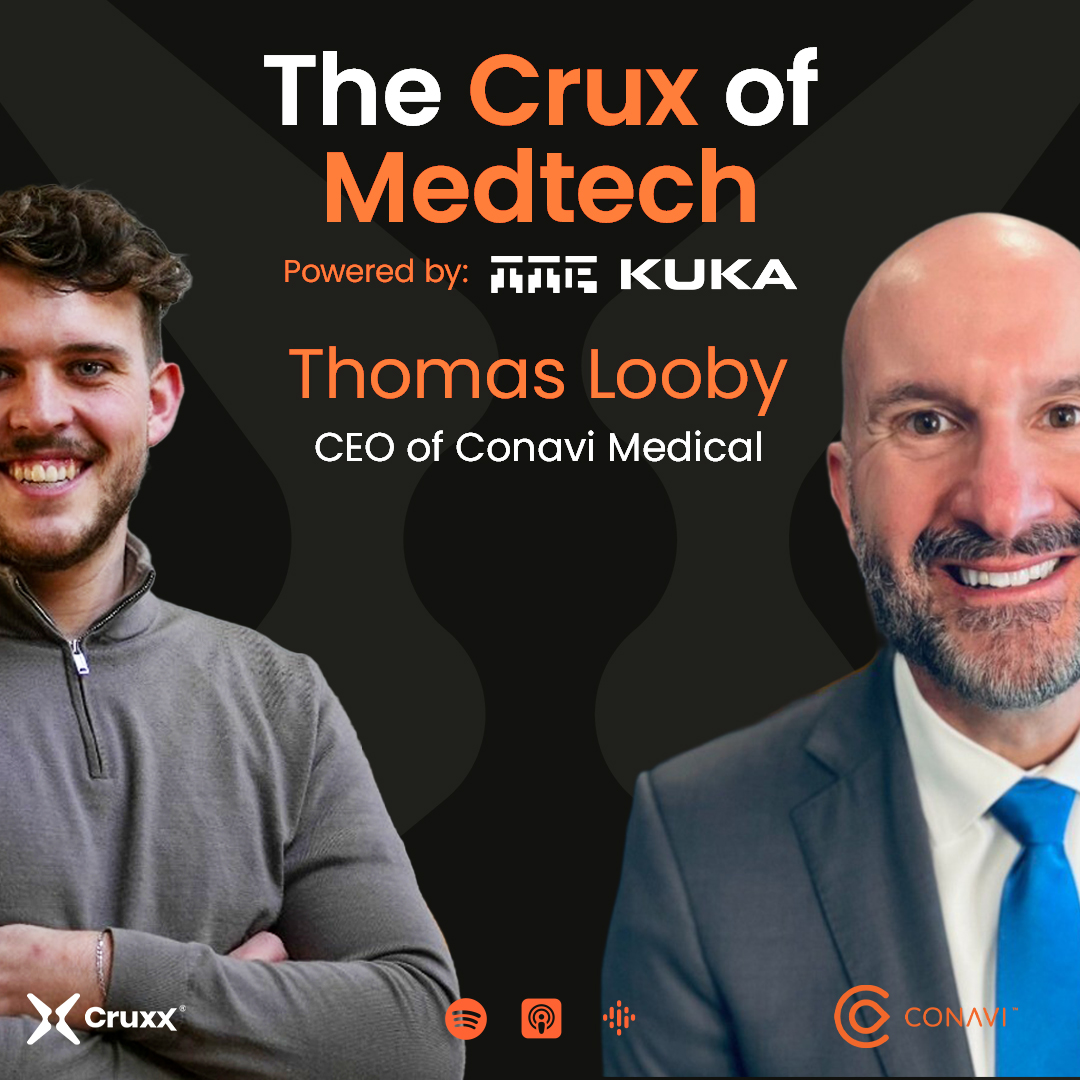Surgical robotics are providing innovative healthcare for the future, but what does the future look like for the industry?
Dual-Modality Imaging That Rewrites PCI Outcomes with Thomas Looby
Surgical robotics are providing innovative healthcare for the future, but what does the future look like for the industry?

Surgical robotics are providing innovative healthcare for the future, but what does the future look like for the industry? On The Surgibots Podcast we spoke to Michael Schmid-Santek, the CEO of BHS Technologies. With a background in mechanical engineering, he’s worked in medical devices for around 17 years, with a specialism in heart catheters. We talked about the developments that BHS Technologies have made to advance the surgical robotics industry, as well as his predictions for the sector as a whole.
You’ve created collaborative plug-ins, how is that going to affect the market?
MMI has adopted our technology, or as they call it ‘also included our device’, for their solutions. We’re able to demonstrate how their system could be used with ours. We are also part of their solutions, which makes us pretty proud. It's also the other way around - we do have distributors and doctors who are asking about installations because they also want to see that setup. Other companies probably don't want to lock into one microscope vendor, because it doesn't make any sense for them. If a surgeon has already bought a brand new extra scope and doesn't need the robotics club anymore, then he should not have to buy robotics. It’s all about the options we can provide.
How do you see funding happening in the future?
The ideal case for our company would be that we will get revenue through what we are making and selling. We know that we have to speed up here and there, especially when we need a second series. That's the plan for now, just to raise another round of growth capital, then stay ahead of the others. We're playing with similar technologies. We're getting to a point where - fingers crossed - our revenue supports our growth.
What do you see as the challenges that you're going to have to overcome in the next couple of years?
Implementing disruptive technology is always going to be a challenge. So is finding a new company and developing something innovative. We are still in the niche, and need to expand that niche day by day. Fundraising will be a challenge with the current situation in the economy. The Ukraine / Russia war is challenging too, but we don't worry about supply chains, because that's something we set up very well. So yeah, there are challenges, but we’re not worried about getting through them.
What do you see as future trends in the surgical robotics industry?
We’re seeing lots of projects that focus on invasive systems. That's one general trend that you can ignore. On the other hand, what I think is super exciting, is the intuitive system. I think that having more specific robots for specific procedures is going to be the future of the industry. That's a more interesting trend in my opinion. We’re seeing devices in laparoscopic surgical robots for example, that insert a Cochlear electrode, and improve patients’ residual hearing and stuff like that. Interventional Systems are also building one tiny robot for interventional surgical procedures and biopsies, which allows us to analyse the data it collects too. AI will keep getting stronger to support doctors and surgical robots too.
What advice would you give to people who come into the industry in the future?
Don't just do it. Know the use cases for what you’re doing. Don't be afraid of going down that path and plan for not just one extra mile, plan for lots more extra extra miles. It's getting more and more competitive in the field, so be prepared for that. If you want to move in a specific direction, you have to know the weaknesses of the other devices in that niche to build something remarkable. That's true for every product you develop. When you decide to develop one super specific robot for one super specific procedure, then you've got to involve as many surgeons as soon as possible to evaluate if the idea really makes sense, and if it has a large enough audience. Who's willing to pay the bills for it? The industry is a lot of fun, but a lot of pain too.
What do you think are the three top technologies that we're going to see in the surgical robotics sector in the future?
What's going to support various robots and functionalities is AI. That's going to support part of or the whole device within augmented reality. Having augmented reality allows you to get more information to the microsurgical cockpit, so that the surgeon has all the information needed - maybe a bit more. Connected devices are also something with potential. In the future we could see a standard interface that you're able to connect various devices to. The devices will be able to collaborate more if they are connected and communicating with each other, controlling functions, and stuff like that. There’s so much potential.
To learn more about where the surgical robotics industry is heading, tune into The Surgibots Podcast here.

Dual-Modality Imaging That Rewrites PCI Outcomes with Thomas Looby

How to Survive FDA Battles and Boardroom Drama - with Sabine Bois